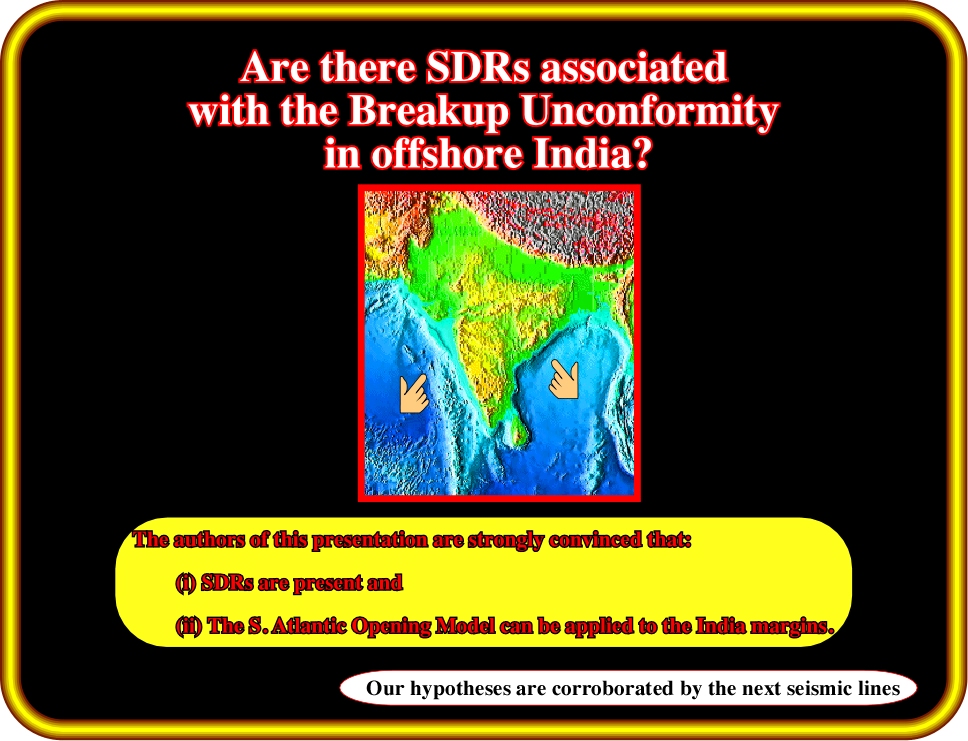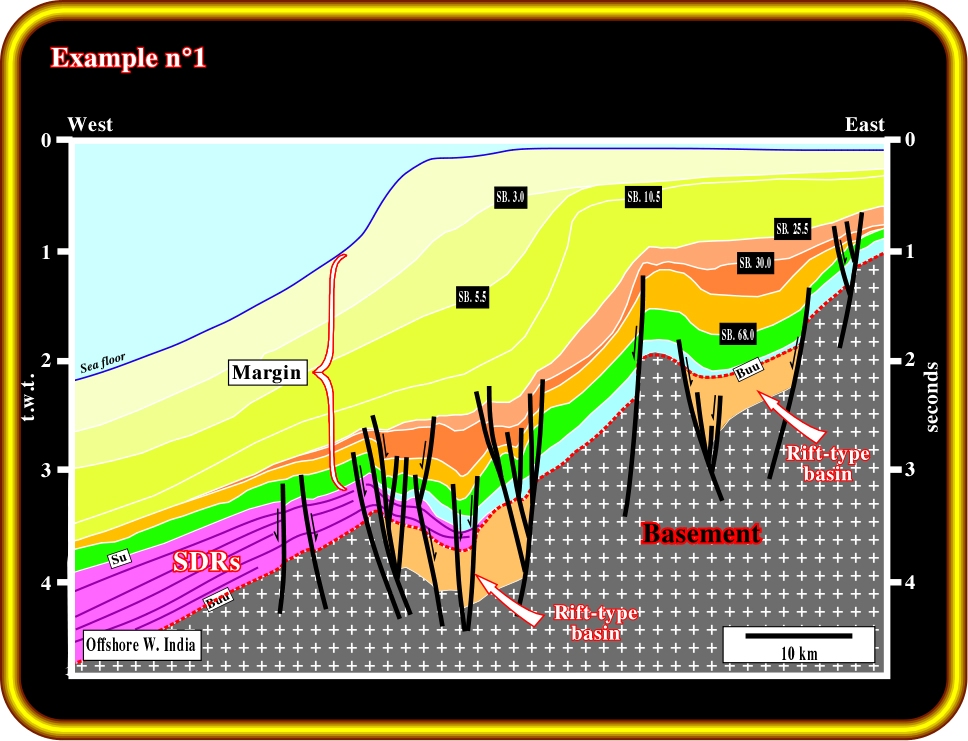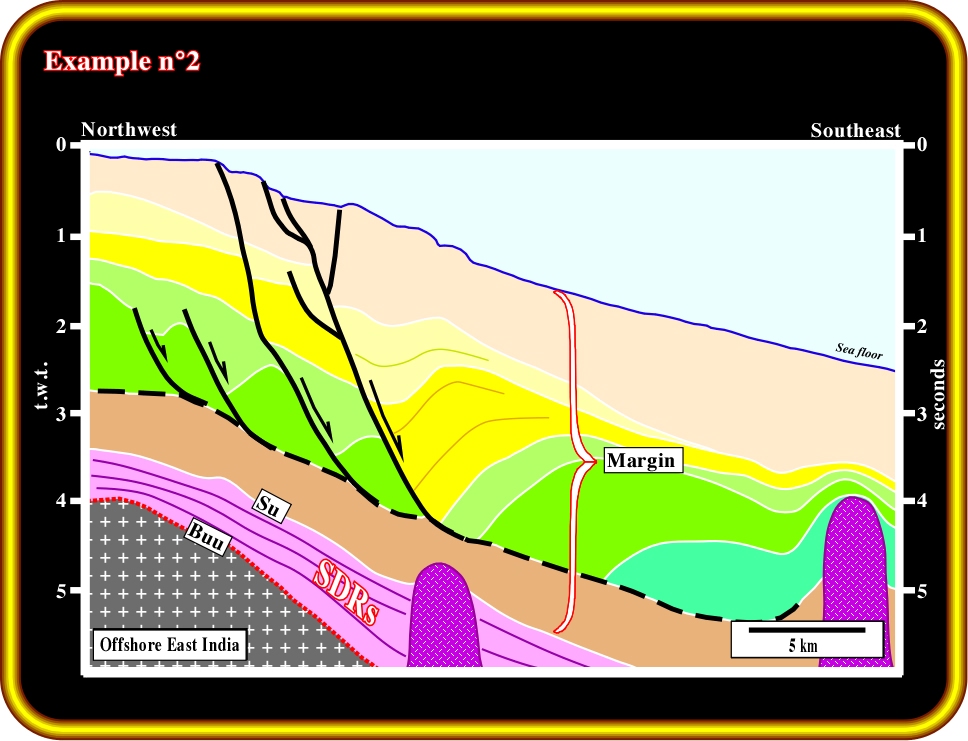
Universidade Fernando Pessoa
Porto, Portugal


Plate 17 - The really question is: Are there SDRs associated with the breakup unconformity (BUU) in offshore India? The authors of this presentation are strongly convinced that: 1- SDRs are present, 2- The S. Atlantic opening model proposed by TotalFinaElf can be applied to the India margins. Our hypothesis seem to be corroborated by the seismic lines of offshore India and onshore Bangladesh. The first line that we will illustrate is located on the offshore West India.

Plate 18- On this seismic line, it is easily to recognize: 1) The substratum, which probably correspond to a hydrocarbon basement, 2) Two rift-type basin, where potential source rocks have been probably deposited, 3) The breakup unconformity (BUU), which separates the rift-type basin from the overlying divergent margin, 4) SDRs overlying the breakup unconformity. They are covered by the sediments of the transgressive phase of the post- Pangea continental encroachment cycle. Probably, they correspond to subaerial lavas flows thinning landward, i.e. away from the sub-aerial spreading centers. On the other hand, the SDRs cover partially the distal rift-type basin, 5) The transgressive phase of the Ceno-Mesozoic continental encroachment cycle, which is characterized a backstepping geometry , and finally, 6) The regressive phase characterized by a forestepping geometry.

Plate 19- On the Eastern offshore of India, the seismic lines, and particularly the regional lines, also suggest the presence of SDRs. In spite of the quality of the old seismic line illustrated on the right slide, which is located on Krishna-Godvari basin, the interpreter, if he knows what he is looking for (Theory precedes Observation, Karl Popper, 1934), he probably propose an interpretation not very different of ours. Actually, on this line, one can recognize: 1) The substratum, probably a basement, 2) The absence of rift-type basin (local phenomenon), 3) The breakup unconformity (BUU), 4) The SDRs overlying the breakup unconformity and clearly thickening seaward, 5) Two volcanic intrusions cutting the SDRs, 6) The backstepping transgressive phase of the continental encroachment cycle, 7) The regressive progradational phase, which is separated from the underlying transgressive phase by a major detachment surface.

Plate 20- The last seismic line comes from the onshore Bangladesh. On this line, it is possible to recognize: (i) The SDRs and (ii) The limit between the subaerial and oceanic volcanism, i.e. the limit between the subaerial crust (SDRs) and oceanic crust. In addition, from bottom to top, one can see: 1) The substratum, which probably correspond to a hydrocarbon basement, 2) The breakup unconformity, which separates the rift-type basin from the divergent margin, 3) The SDRs thinning landward, 4) The sheeted dikes associated with the pillow lavas composing the oceanic crust, 5) The margin on which we have included the margin sensu strictu and the overlying foredeep.
In conclusion:
The presence of SDRs on the regional lines around the Indian continent strongly suggest that the breakup of the lithosphere and the onset of the sea-floor spreading were similar to those proposed to the South Atlantic, which in fact is similar to those of North Atlantic.
Send E-mail to carloscramez@gmail.com with questions or comments about this conference.
Copyright © 2006 CCramez
Last modification:
August, 2014